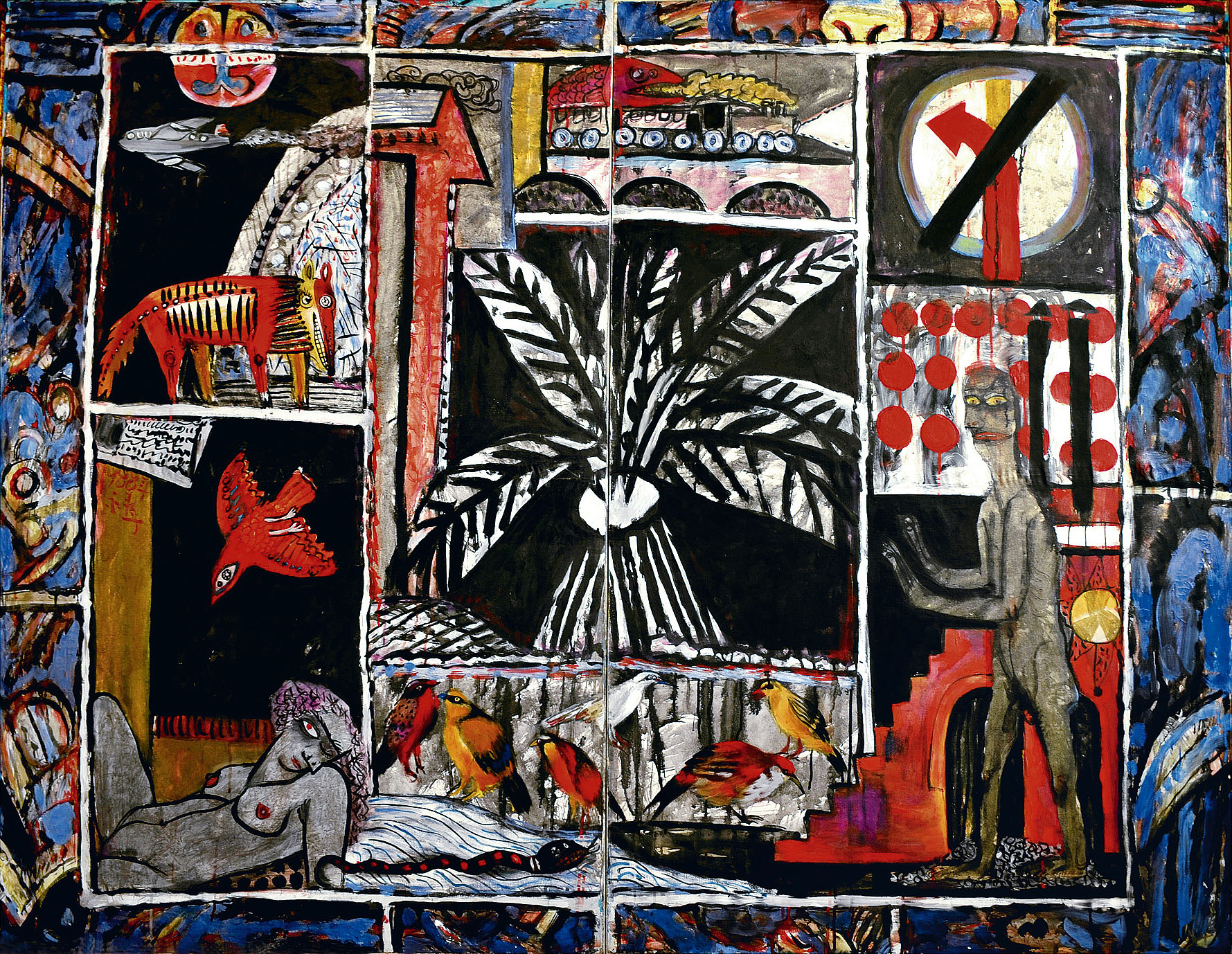
Ye Yongqing
Sleepless
1988
Oil on canvas
Painting is the flame of a torch that sets life on fire and recovers all its rights. It is a true grasping and transcending of life.
(Ye Yongqing, On the Nature awareness of South-Western Art, 1986[Selected])
Among these works [of the mid- to late 1980s – Editor], the assault of civilization on nature, and the harm inflicted on man by reality, that is, the plight of living existence and the spiritual clashes arising thence dominated their creative direction. Accordingly, in their paintings, full of the breath of life, there appeared just behind the houses in which they lived, the towering smokestacks of power plants, there appeared the youths whom they could come across every day and who because of suffering whatever loss, had nothing to do, and there appeared those running away in spirit, the terrified faces of animals and sluggish birds who had lost their plumage. These images were, for the beholders, no longer reality itself, but symbols of the soul. Dreamy moods and sorrowful sighs gradually occupied the surface of the paintings. However, they usually buried these sighs in some deep place and, unlike many painters of the New Wave, they did not represent their opposition to industrial civilization and environmental pressures in any direct or conceptualized way, but rather manifested the solitude of life, and its distance from the original state. Nature’s turning its back and the slavery of society together indicated a deep implication of life: the affirmation of maintaining one’s own self.
(Wang Lin, China in the Eyes of a Scholar, 1994[Selected])

